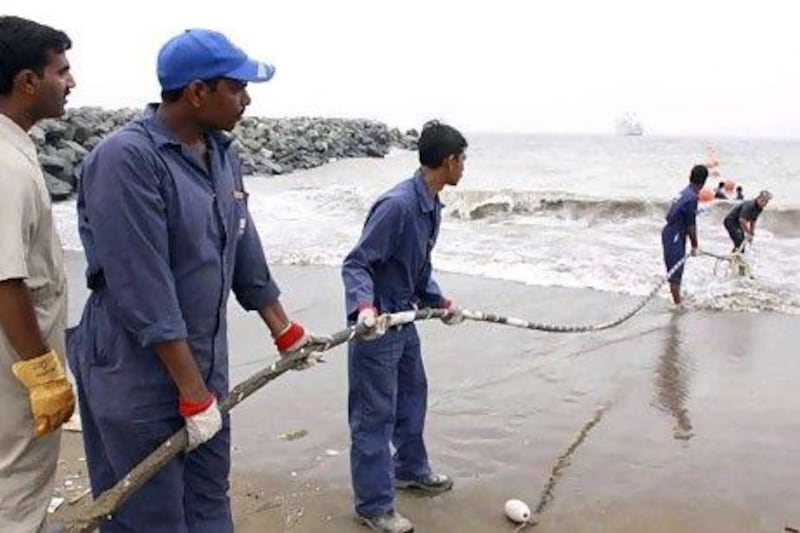Three fibre-optic cables carrying data between Asia and Europe have been cut, telecoms company says

There are 16 fibre-optic cables in the Red Sea. Damage to underwater cables can disrupt internet services.
Taniya Dutta
Mar 05, 2024
Yemen's Houthi rebels are unlikely to be responsible for damage to underwater telecommunications cables in the Red Sea, where the Iran-backed group have been carrying out attacks on commercial ships.
Three fibre-optic cables carrying data data between Asia and Europe were cut in the Red Sea, Hong Kong telecoms company HGC Global Communications reported on Monday.
The cables affected were Asia-Africa-Europe 1, the Europe India Gateway, and Seacom and TGN-Gulf line, affecting 25 per cent of the data flow through the Red Sea, the company said. It did not specify where or how the cables were severed.
Seacom told AP that “initial testing indicates the affected segment lies within Yemeni maritime jurisdictions in the southern Red Sea”.
Indian company Tata Communications, which has ties with Seacom, said there was a “snag” with the undersea cables, but that communications were “automatically rerouted to other services”.
READ MORE
Britain's undersea cables vulnerable to attack
There were initial fears the Houthis were behind the severing of Red Sea lines. The group has attacked commercial vessels in the region over Israel's war in Gaza.
A social media account linked to the Houthis posted maps in December showing international cables passing through the Red Sea, prompting fears the group was planning to attack them.
Pooja Bhatt, a researcher in maritime security with the Observer Research Foundation in Delhi, said the depth of the cables made sabotage unlikely.
The cables "are not very thick but encapsulated in watertight sheets. They lie in the deep ocean and are not easy to cut," Ms Bhatt told The National.
“We can very well understand Yemenis should not have the capability to dive down that deep to physically damage cables."
While the undersea cable communication infrastructure is commercial, attacks or sabotage would prompt countries to send their militaries to protect them, Ms Bhatt said.
“Such activities will bring a lot of geopolitical focus on these issues. Until now, submarine cables that have been around for several decades were seen commercially where countries per se were not involved, but now with a focus on attacks on those activities, countries will bring their militaries into action for protection,” she said.
There are reportedly 16 fibre-optic cables in the Red Sea that carry an estimated 17 per cent of all international data traffic from East Asia to Europe.
Damage to telecommunications cables has caused major disruptions, including in 2008 and 2011, when cables were damaged in the Mediterranean, Arabian Gulf and the Indian Ocean.
No comments:
Post a Comment